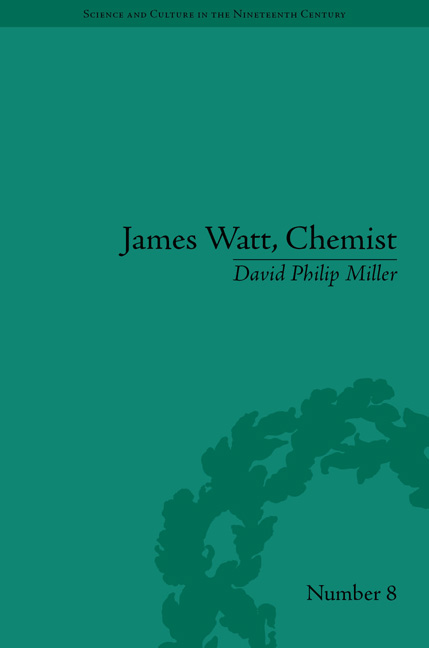Book contents
4 - Watt's Chemistry of Heat
from II - Realities
Summary
I argued in Chapter 2 that the realities of Watt's chemical work and understandings were obscured in the nineteenth century by his own narratives of his invention, and by the ‘water controversy’. In the latter, elite scientists, such as members of the Cambridge group and the leadership of the Chemical Society, sided with Cavendish and condemned Watt's chemistry as archaic, more of a stain on his reputation than a valuable addition to it. Watt's supporters, on the other hand, made their claim for their hero in a way that artificially and incidentally modernized the nature of his chemical claims and arguments (as well as Cavendish's). It remains a difficult task to understand Watt's chemistry on its own terms, but in this chapter I will make an attempt. I am guided by a conviction that it is a mistake to separate in an a priori fashion, as authors usually do, Watt's philosophical (or theoretical) chemistry and his practical chemistry. That mistake is probably predicated also on the belief that Watt failed as a chemical theorist (that is in his public venture into the chemistry of water and airs), while still doing interesting things as an ingenious ‘cookbook chemist’ with glazes, varnishes, inks, bleaching agents, medically promising airs and, of course, steam.
The bifurcated approach to Watt's chemistry is misleading on two counts. First, a number of Watt's practical ventures did draw upon his theoretical ideas. Second, there is a good case for seeing Watt's chemical ideas as in turn evolving as a result of his practical engagements. We will see in detail in this chapter and the next that Watt's experiments on steam, undertaken in part to inform his attack on the practical problem of steam engine improvement led him to develop a chemistry of heat that went beyond that of his mentor Joseph Black. Watt was thoroughly convinced that there was a connection between the chemistry of steam and the chemistry of airs. In fact ice, water, steam, mist, water vapour, common air and other airs were all subject to the chemistry of heat and their practical and theoretical study was interrelated as a result.
- Type
- Chapter
- Information
- James Watt, ChemistUnderstanding the Origins of the Steam Age, pp. 85 - 124Publisher: Pickering & ChattoFirst published in: 2014



